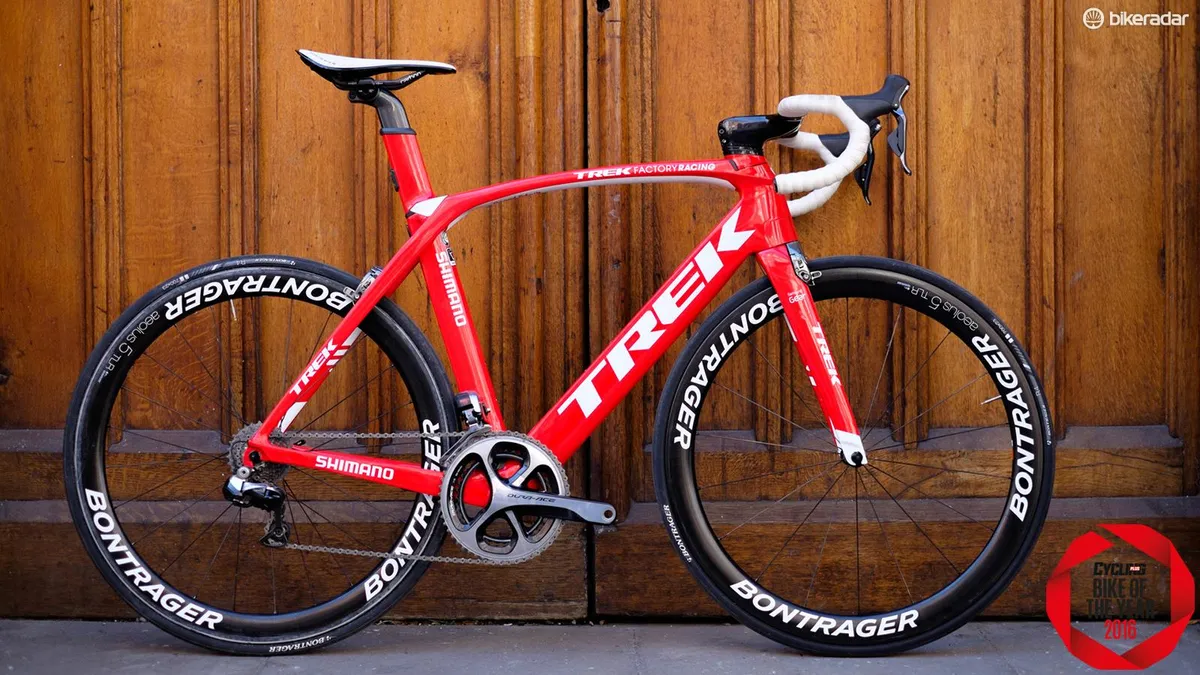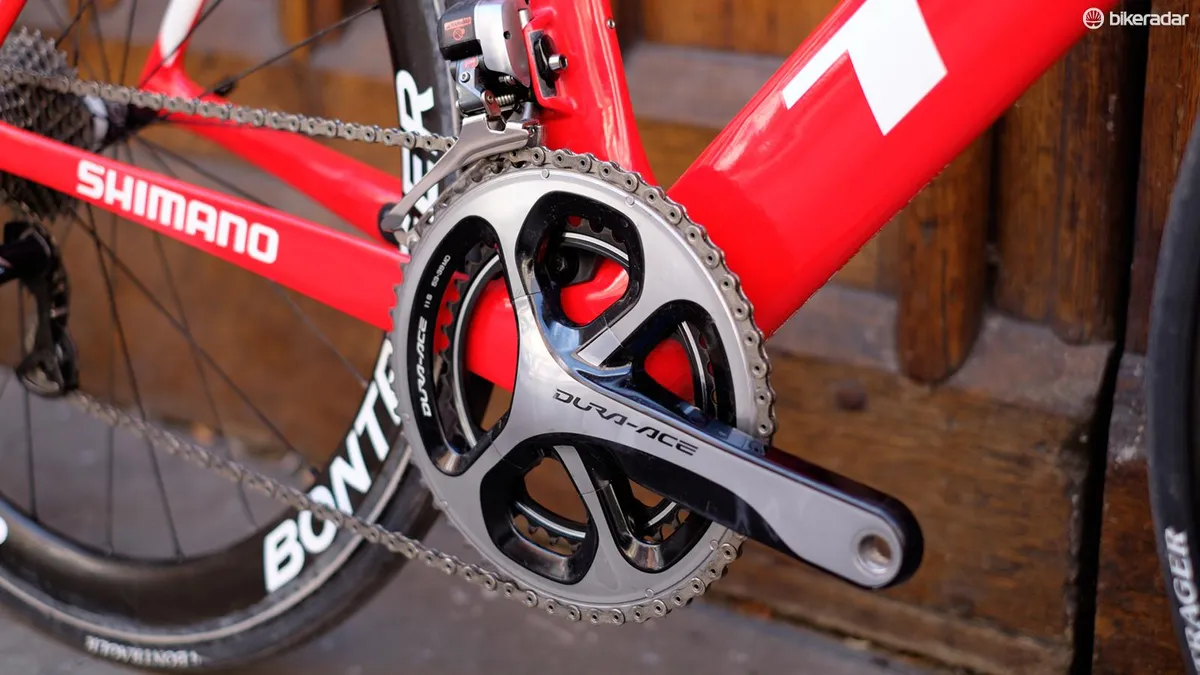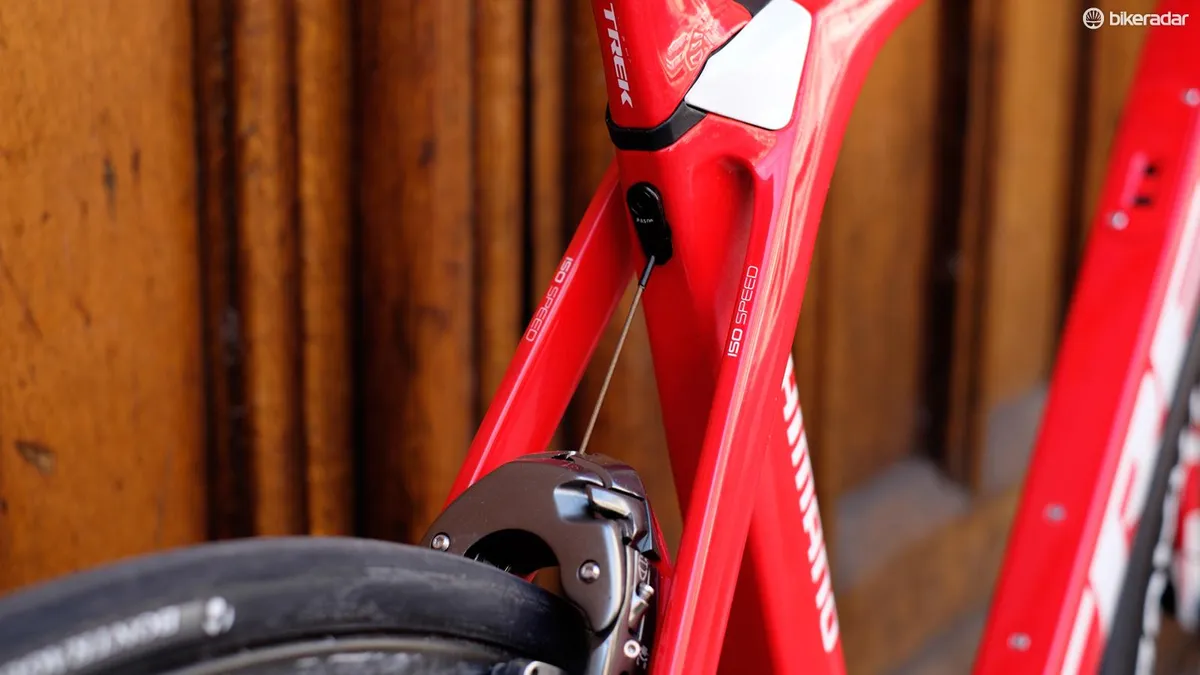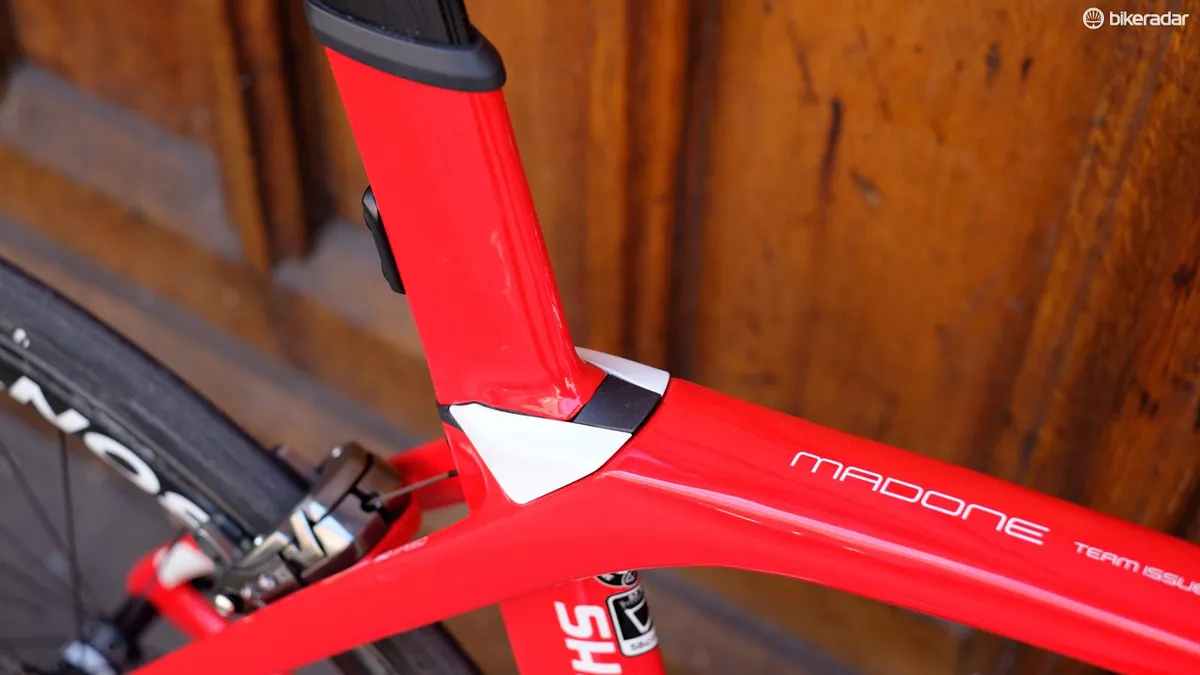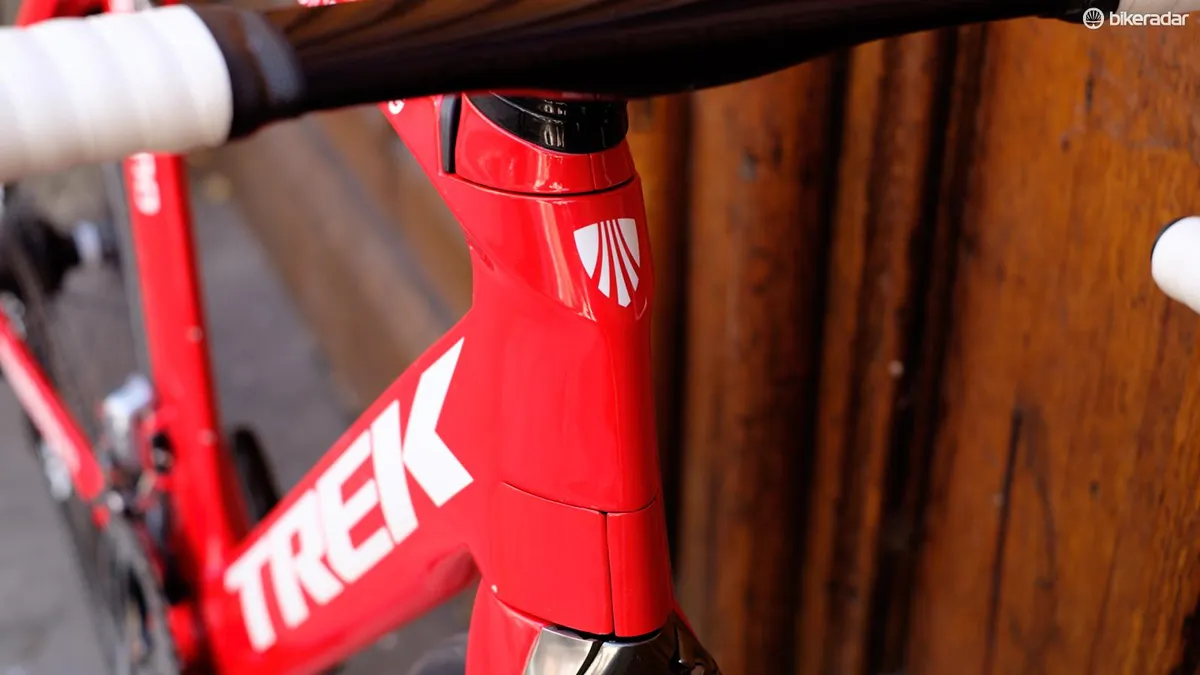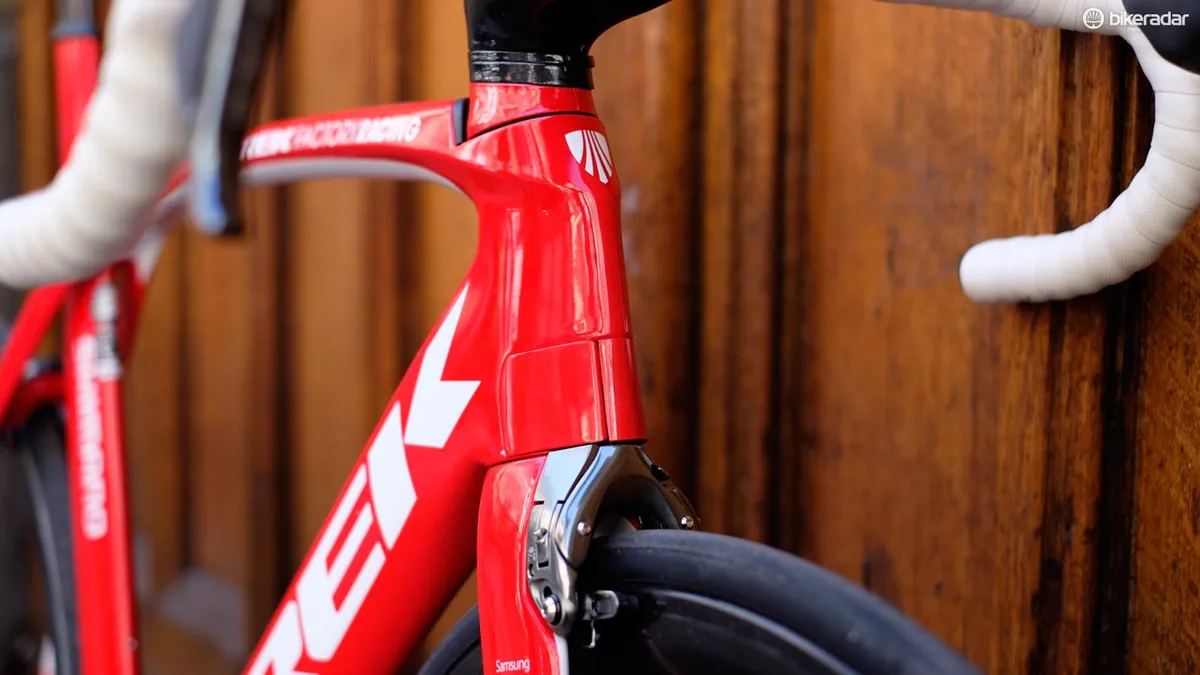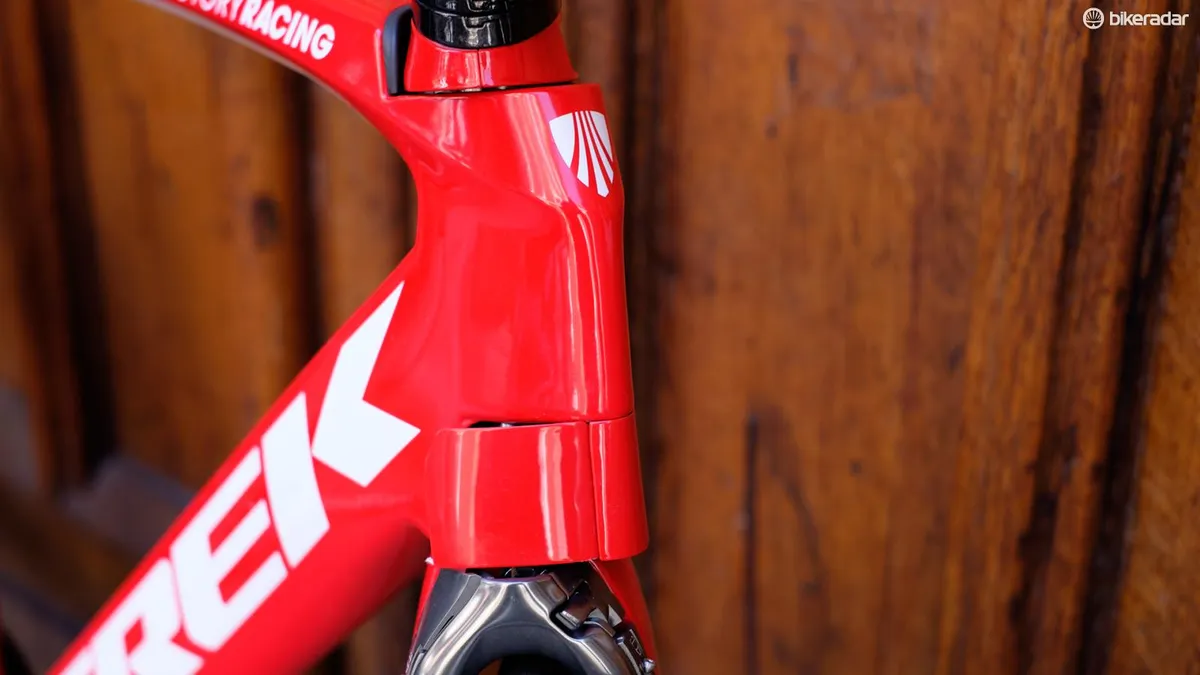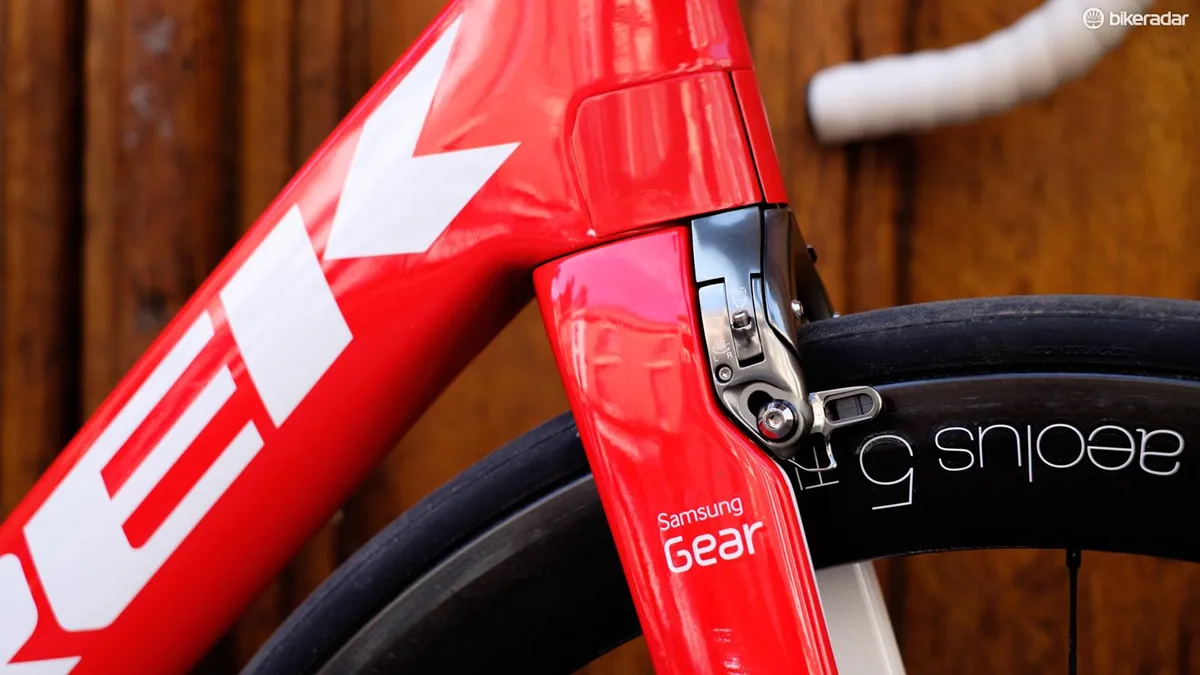The all-new and very radical Trek Madone launched last summer and saw race action in the major tours. It and the new Scott Foil and Specialized Venge Vias show the pinnacle of the latest trends in aero road bike design – which led it into the 'superbikes' category in our stablemate Cycling Plus magazine's recent 2016 Bike of the Year roadie mega-shootout.
Added IsoSpeed ingredient
This bike has a significant trick in its back pocket – an IsoSpeed decoupler (just like the one found on the Domane). This mechanical ’pivot’ at the intersection between top tube, seat tube and stays is combined here with a 'seat tube within a seat tube' (meaning the outer aero section stays independent of the moving parts).
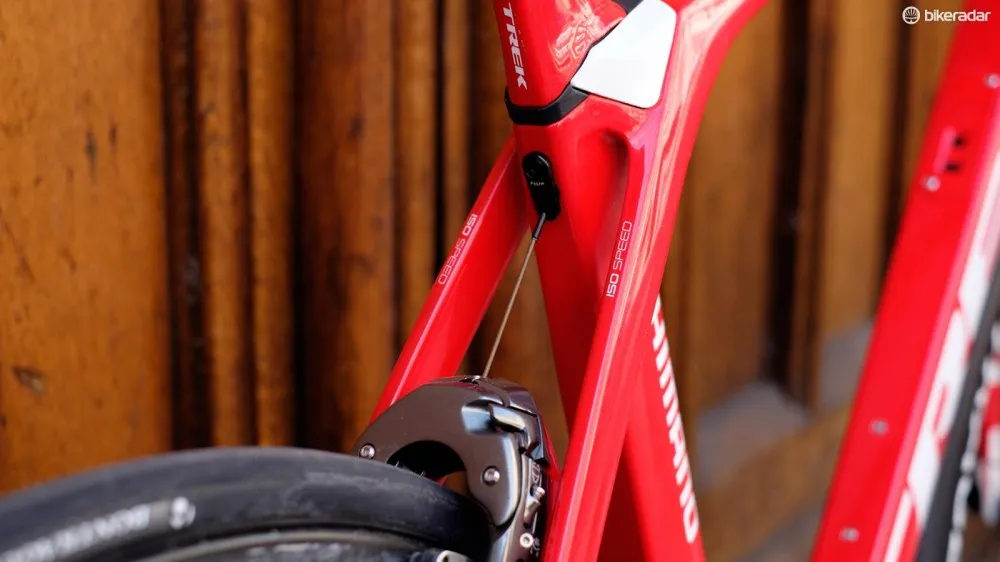
The decoupled IsoSpeed seatpost is concealed within an outer aero housing
That makes the back end of the Madone simply the most comfortable aero machine we’ve tried. In fact, it's not just the most comfortable aero bike, but also up there with the most comfortable race machines around.
Now you might think that the added complexity of the IsoSpeed, the direct-mount centre-pull front brake (with its ‘Vector wing’ covers that pivot outwards when turning on sprung hinges yet stay slippery and aero in a straight line), and the Di2 control centre encased in the down tube, are all going to add significant weight. But as our 58cm test machine tipped the scales at just 6.8kg, it's really not an issue. Yes, it’s heavier than its brethren, but it’s not exactly what you’d call a porker. Trek claims an H1 (the lowest, raciest fit) 56cm frame weighs in at 950g, and that’s seriously impressive for such a complex design.
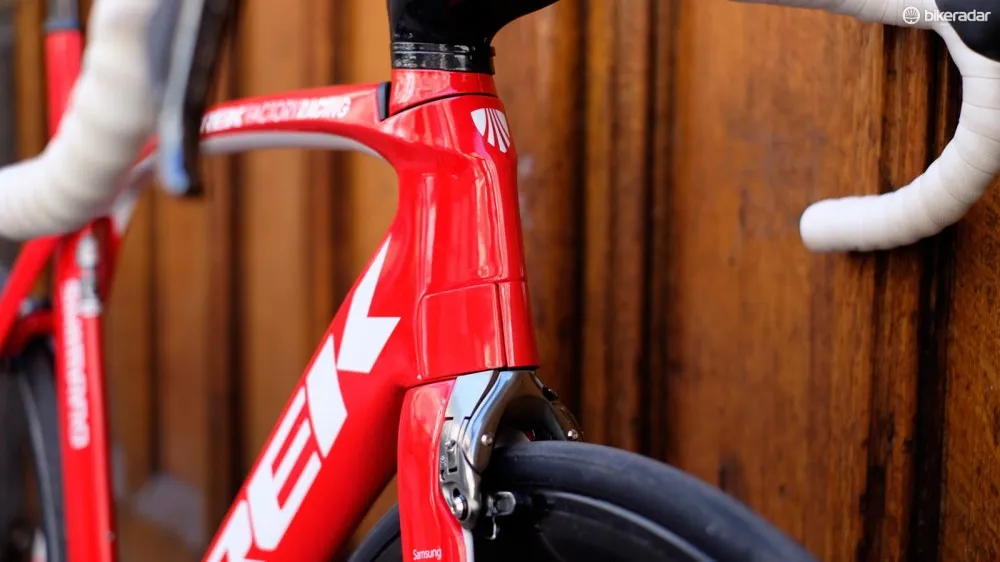
The integrated front brake is a work of serious complexity
As our test machine came as part of Trek's Factory program, we got it in exactly that full-race spec H1 fit. That means a slammed front end compared with the H2 fit that’s become the norm on the majority of Trek's high performance range (both of the other Madone models come in H2 fit as standard).
That said, you can get some adjustment even with the aero-saving one-piece aero bar and stem (Trek claims 34g of drag reduction) thanks to the clamshell splitting headset spacers. Obviously a bike of this grade and complexity requires a professional fit from Trek’s in-house team.
Seriously smooth, seriously speedy
Though the ride position is long and low the smothering smooth back end makes for a bike that – providing you’re flexible enough – rewards you with bags of comfort. Once you get out on the road the Madone is instantly rewarding, and damn it's fast.
That’s countered though with a feeling that the speed is effortless. Usually on such a speed-focused bike you get feedback and the feeling of stiffness and resolute rigidity. This, however, is cosseting – and it's only when you glance at your head unit and realise the velocity at which you're travelling and the ease at which you can achieve it does the Madone’s intoxicating charm hit home.
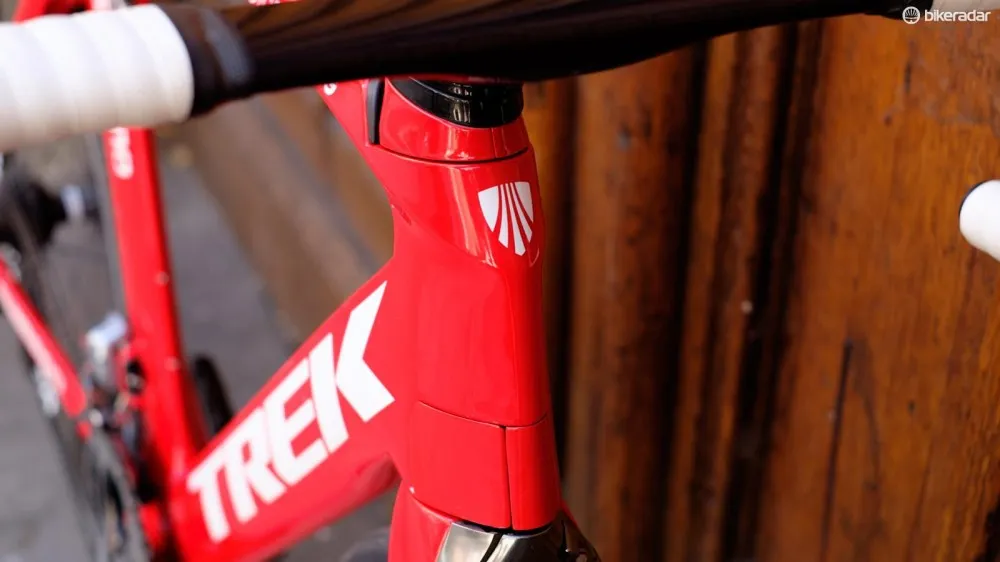
The H1 race fit makes for a slammed front end
In fact, on the 2.8 mile section of rollers on the Trek's chosen test route I managed to shave a massive 32 seconds off my previous segment PB. Now that’s not all down to the bike's aero-prowess, as there’s no bigger placebo effect than trying to live up to a pro-level superbike's abilities. This isn’t a bike you’ll ever just want to go for a leisurely cruise on.
If you're concerned though that the Madone would be just too-much on your local broken road surfaces, we’d like to put you mind at ease. The aforementioned cosseting nature of the chassis can be increased further, as Trek has cleverly made provision for 28c tyres, even when running on modern 25mm wide (externally) rims like the Madone's Bontrager Aeolus 5s.
You could in fact make them even plusher by converting to tubeless (as the Aeolus is tubeless ready), though Bontrager's tubeless rim strips will add 100g at each end.
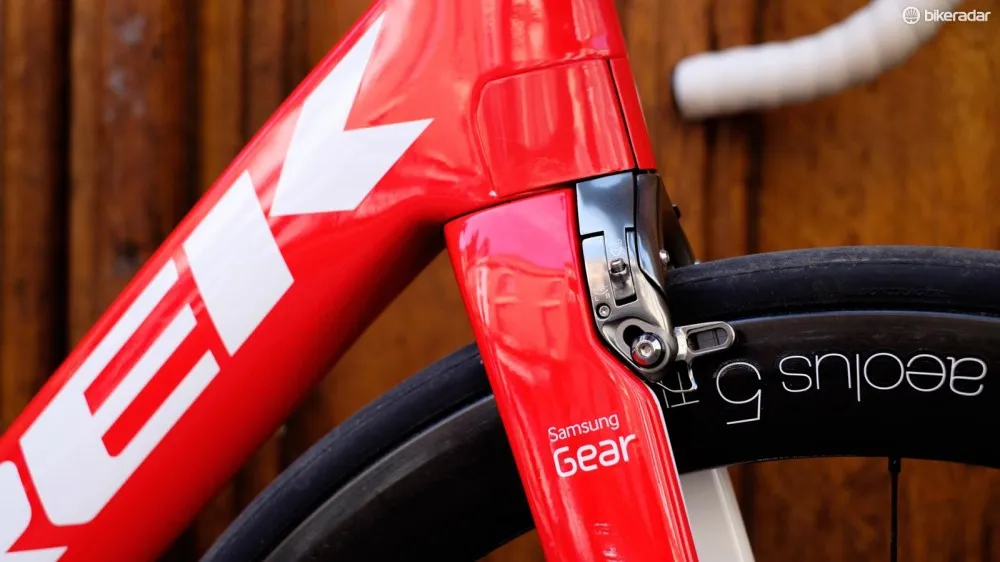
The tubeless-ready Aeolus 5 wheels coped decently with gusty conditions
On successive days' test riding we experienced the full gamut of British weather, from plenty of rain to high winds, and – of course – overriding damp and cold. In high winds the Madone coped well, with just the occasional pull on the front’s 50mm deep Aeolus rim. We tried switching out the 5 for the shallower 3 (from an Emonda we had on test) and this created much better balanced handling for blustery conditions.
Proficient performer, but hard to live with
The front end, with its smooth slippery shaped bar, balances well with the rear. Under hard sprints you can feel a little flex from the one-piece bar, putting the Madone a little on the back foot compared with the more assured feel of Cannondales flyweight EVO, or Focus’s hydraulic disc-equipped Izalco Max.
On ascents though the Madone’s low weight, efficient drivetrain stiffness and road-holding smoothness make for a very proficient performer. It’s bettered by the out-and-out climber that is the EVO, but it has the better of the similarly designed Pinarello K8s, which also features a 'softtail' rear on an aero-focused design.
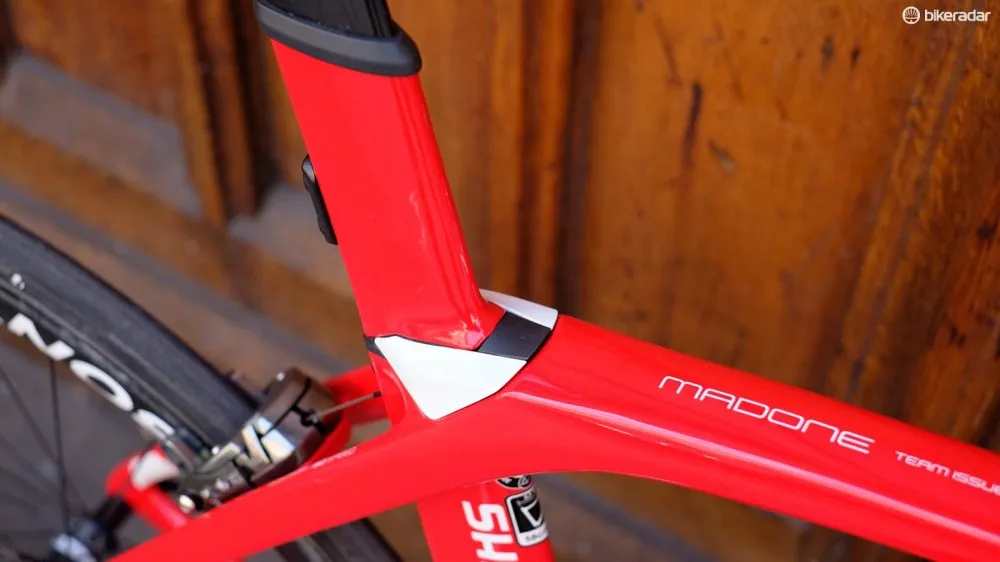
Another angle on the IsoSpeed rear end, which provides almost unparalleled levels of comfort for an aero machine
On descents the Madone's IsoSpeed rear end seems to hunker down and hold on with resolute, unmoving grip. The Madone centre-pull, complex cam-roller brakes look like a improved modern incarnation of classic Campagnolo Delta brakes, but these are shod with Swiss Stop's Black Prince pads, which add layers of tactile feel, though compared with benchmark Dura-Ace items they do have less travel and less progressive feel at the lever.
That slightly on/off feel is one you soon become used to though. After a few high-speed speed scrubs on entry into corners we’d got suitably accustomed.
On the downside, the high complexity of the Madone chassis, which makes it so very, very awesome out on the road, also means it’s a bit more of a challenge to live with if you don't have a team of mechanics on hand.
The full internal routing of all the cables, the one-piece bar/stem combo, not to mention the Vector wings, and internal Di2 compartments all give us the shivers when it comes to maintenance, and that's before you consider needing to pack it in a flight case for overseas trips. It's all doable stuff, but be prepared for a steep learning curve or higher than average service bills from your bike shop (then again, if you can meet the asking price you should be able to afford to maintain it).
Best superbikes - top 3 - bike of the year 2016
